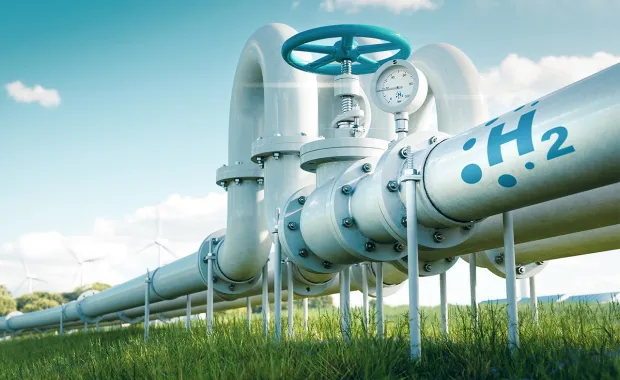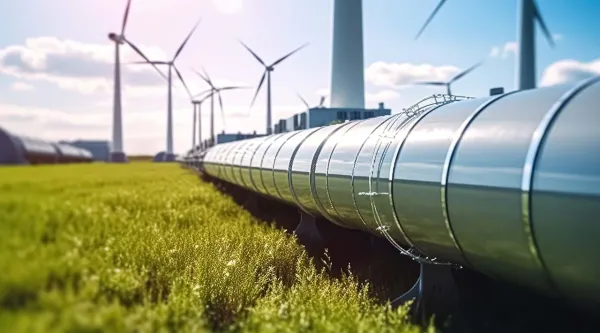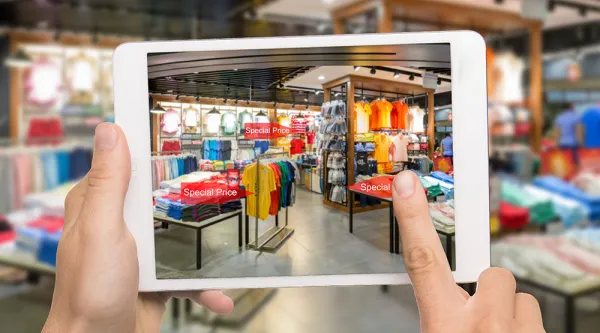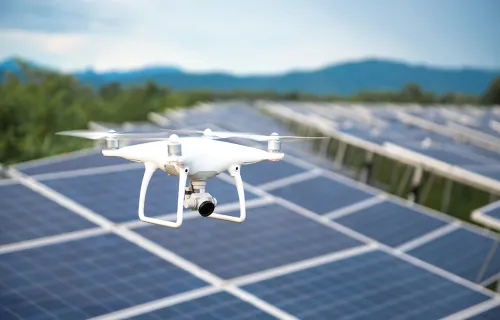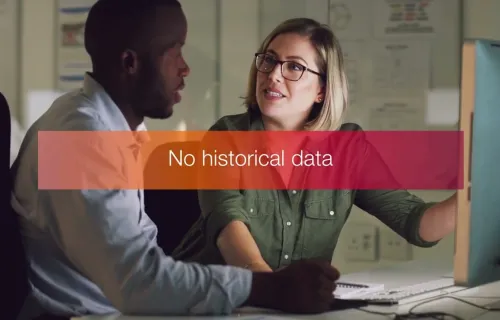As the world seeks sustainable energy solutions, the hydrogen sector is emerging as a crucial player in the pursuit of a cleaner future. The hydrogen sector currently is experiencing unparalleled growth due to its potential to revolutionize various industries. However, this growth presents challenges such as production efficiency, cost effectiveness and safety.
Increasingly, energy organizations are turning to digital twin technology, which merges virtual and real environments, to simulate complex manufacturing processes and gain operational efficiency insights.
This article explores the current landscape of hydrogen production, the usage and benefits of digital twins to improve actionable insights, the roadmap for implementing digital twin technology and the potential it holds to change the way we produce hydrogen.
Hydrogen production: a guide
Today, gaseous hydrogen is produced primarily through processes such as methane vapor reforming and electrolysis. Methane vapor reforming produces gray hydrogen, which uses fossil fuels and releases carbon dioxide (CO2) into the atmosphere.
On the other hand, blue hydrogen captures and reuses the by-product CO2, making it a more environmentally friendly option in hydrogen production. The use of electrolyzers to produce hydrogen is considered to be the future, although current production capacity is currently limited to a few gigawatts.

Hydrogen itself is a clean-burning molecule that can be used in fuel cells to generate emission-free electricity. This makes it a promising solution for renewable energy.
However, producing hydrogen is a complex process that requires precise control of various parameters to ensure efficiency and safety. Advanced technologies are needed to improve our understanding and control of these processes.
What are digital twins?
Digital twin technology is a revolutionary concept transforming industries globally. A digital twin is a virtual replica of a physical plant or system, created using real-time data and advanced simulation techniques. It enables the prediction, visualization and analysis of system performance under different conditions, leading to improved decision-making and risk management.
This technology can be used to create a sophisticated model of the hydrogen production process, which enables manufacturers and producers to optimize operations, improve product quality and reduce time to market.
This offers a strategic advantage in an ever-changing and demanding industrial environment.
The role of digital twins in hydrogen production
Digital twin technology collects data from sensors installed in hydrogen production plants or factories. This data is processed using machine learning algorithms to create a virtual model of the process. Manufacturers can then analyze this model to gain insights on how to optimize performance, maintenance requirements, and control emissions and efficiency.
As a result, digital twins provide a comprehensive overview of current operations and an outlook on future performance. Manufacturers can test different strategies and identify potential problems by simulating various scenarios before they occur in the real world.
Benefits of digital twins in hydrogen production
The implementation of digital twin technology in hydrogen production offers several advantages. It enhances customer satisfaction by ensuring consistent product quality; at the same time, an efficient and reliable production process leads to a continuous supply of high-quality hydrogen, meeting customer expectations and strengthening their confidence in the product. Additionally, a virtualized factory and precise monitoring of the various production steps improves product quality and can track carbon intensity of the supply.
Digital twins further enhance operational efficiency by identifying bottlenecks and inefficiencies in the workflow. They enable predictive maintenance and minimize unexpected system failures and associated downtime. By reducing waste and increasing productivity, they contribute to the overall profitability of the manufacturing process.
Ultimately, digital twins also inform and drive sustainability efforts. This helps manufacturers monitor their environmental impact and make necessary adjustments. In an industry where sustainability is critical, the ability to provide valuable data on emissions, energy consumption and its source are essential for obtaining carbon certificates for the supply.
Requirements for successful implementation of digital twins
The implementation of digital twin technology in hydrogen production requires several steps. Initially, sensors must be installed on the production facilities to collect real-time data. The type and quantity of sensors required depend on the parameters to be monitored, such as temperature, pressure and flow rate.
The subsequent step involves creating a framework for data processing. This involves developing or selecting machine learning algorithms to analyze sensor data and create a virtual model of the production process. The complexity of the model depends on the required level of detail.
Once the digital twin is ready, it must be integrated into the existing manufacturing systems. This may require changes to the hardware and software infrastructure to ensure seamless communication between the digital twin and physical assets.
The last step in implementing the digital twin is to use the knowledge and predictions gained. This involves utilizing the virtual model to simulate various scenarios and identify potential issues or improvements. By testing different strategies and analyzing the results, manufacturers can optimize their processes and make informed decisions.
Building a roadmap to implement a digital twin
To successfully implement digital twin technology, a strategic approach is necessary. First, clearly define goals for the digital twin and align it with overall business objectives. This ensures effective use of the technology and delivery of added value.
Next, assemble a cross-functional team of experts from the fields of data science, production and IT. The team should collaborate to create and execute the digital twin, using their collective expertise to overcome any potential challenges.
Additionally, educating and training employees and users is a crucial component of this strategy. Employees must be informed of the advantages of digital twin technology and be trained to use it effectively. This not only enhances their productivity, but also promotes acceptance and adoption of the technology.
It is important to continuously monitor the performance of the digital twin throughout the process and make any necessary adjustments. This ensures that the digital twin meets the changing requirements of the production process and delivers optimal results.
Future potential and integration
The future of hydrogen production relies, in part, on the enhanced capabilities of digital twin technology. Digital twins offer numerous benefits that can transform the way we produce hydrogen, from improving operational efficiency to advancing sustainability efforts. By providing a detailed, data-driven view of the manufacturing process, producers can optimize their processes, reduce costs and improve product quality.
Integrating artificial intelligence (AI) into these digital models enhances their potential. The automation and predictive capabilities of AI enable hydrogen producers to anticipate potential issues and continuously improve their processes to keep up with the changing demands of the energy market.
